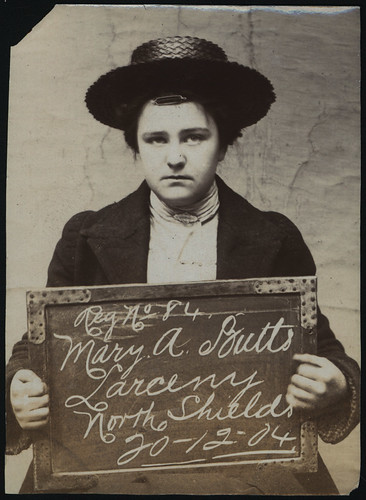Last Updated on March 16, 2012, 3:57 pm ET
In the process of developing the Code of Best Practices in Fair use for Academic and Research Libraries, there was one worry that we encountered over and over again, and that may be doing more damage to library practice than any other myth, concern, or misapprehension: the fear of library liability for nefarious uses of copyrighted library collections material by library users.
The level of fear, uncertainty, and doubt about this issue is way, way out of proportion to the actual risk of liability for any library or librarian. Put simply, it is almost impossible that you or your library, when acting on the basis of your good faith beliefs about fair use, could be held responsible for the bad acts of your patrons who abuse the access you provide. And yet every day, in libraries all around the country, decisions are being influenced by fear of liability for users’ bad behavior. It’s time to nip that fear in the bud.
I’ve written this up as a simple FAQ on the Code FAQ for Librarians page, if you want the short version. Here’s the longer version (which includes the FAQ text):
Are libraries who make good faith fair uses responsible for what their users do with works provided in the context of that fair use?
Almost certainly not. For example, what if a library makes a good faith judgment (based on Principle Two of the Code) that displaying an image as part of an online exhibit is fair use, and a user of the website downloads the image and prints it for sale on t-shirts?
In that case, only the user is responsible, not the library. It is always the responsibility of the user to make her own decisions about the limits of her own rights. In the course of making their own fair uses, libraries make content accessible to users who are then free to re-use it in other ways. And libraries can and do provide useful information about copyright to their users; indeed, the Code reflects in several places a consensus in the academic and research library community that such efforts are worthwhile and important. But neither providing content for fair use purposes nor providing advice in good faith puts the library at risk of liability for what users do with that content or that information. The responsibility for infringement lies with the user, not the library.
You may notice that in several places the Librarians Code recommends that libraries limit access to materials, or use limited amounts of copyrighted works, or (as an enhancement) use technological protection measures, depending on the purpose of their proposed fair use. Principle One, for example, includes limitations that access to materials on e-reserve be limited to eligible students and to the duration of the course. While some libraries use these strategies out of fear that they will be responsible for any third-party abuse of access to materials, that is not the justification for the limitations and enhancements in the Code. Instead, they are rooted in the academic and research librarians’ consensus that these strategies help to tailor the library’s use so that it is appropriate to a legitimate fair use purpose. Based on both the statute and the cases that have been decided, librarians know that the amount of the work they use (which includes the breadth of access they facilitate) should be tailored in this way. So, access to an e-reserve system is limited to currently enrolled students because it is only those students whose access is justified by the professor’s legitimate fair use purpose. The professor is not teaching the class to everyone on the Internet, so the Code suggests that providing unfettered access to any Internet user goes beyond the latitude that fair use provides him for teaching. Technological measures, including lower-resolution image files or streaming rather than downloadable media, serve a similar purpose. The core concern is not that users will turn around and abuse their privileges, but that the library itself provides a level of access that is justified by its fair use purpose. There is also another, related reason for these admonitions. Although most copyright lawyers agree that, technically, a user’s “good faith” shouldn’t be a consideration in fair use analysis, there doesn’t seem to be any downside to making reasonable efforts, above and beyond what the law requires, to assure that material is used appropriately.
Is anyone ever responsible for the infringing acts of third parties?
Yes, in certain narrow cases. Although the Copyright Act doesn’t explicitly create secondary liability (the technical term for holding one person responsible for the acts of another), courts have recognized at least two situations where one person can be punished for the infringing acts of another:
-
If you control the activities of an infringer, and you receive a direct financial benefit from their infringement, you can be held liable for that activity. This is called “vicarious liability,” and generally involves liability by employers for the infringements of their employees. In cases of downstream use of library materials, the library cannot control the actions of its patrons, nor does it receive a direct financial benefit from the infringement. In our example, the library can’t stop the student from making t-shirts, and it doesn’t share in the profits. So, no vicarious liability.
-
If you know that someone is infringing copyright, and you induce, cause, or contribute materially to their infringement, you can be held contributorily liable for that activity. Libraries that provide access to materials for a fair use purpose do not know that their users will abuse that material, and certainly do not induce or cause them to infringe. In our example, the library will have no way of knowing that the user is selling t-shirts, and it certainly did not induce or contribute materially to the infringement. Merely providing the material that an infringer uses, especially when you provide that material in the context of your own legitimate use, does not rise to the level of inducing infringement.
The Supreme Court addressed the question of secondary liability for copyright infringement in the Grokster case, which found the file-sharing network liable for the infringements of its users. In that case, the Supreme Court said that the movie studios had to show that Grokster acted “with the object of promoting its use to infringe copyright, as shown by clear expression or other affirmative steps taken to foster infringement.” Grokster showed its intent to promote infringement by advertising designed to attract users interested in sharing copyrighted music. Libraries are obviously not engaged in any such activity.
The limits of liability for libraries can be seen in the preliminary decisions that we have seen in the lawsuit against Georgia State over its ereserves and course management systems. Way back in September 2010, Judge Evans dismissed the vicarious liability claim, saying that even if the reserves and CMS system were infringing, there is no evidence that GSU profited directly from their use. Then, in May 2011, Judge Evans dismissed the publishers’ contributory liability claim. While the one sentence dismissal makes it difficult to know the judge’s thinking, it’s clear from her earlier decisions that she was impressed by the GSU library’s good faith efforts to educate users about fair use and to encourage responsible use of the ereserves and CMS platforms. Such good faith acts cannot amount to knowingly contributing to infringement. The only remaining theory of liability in the GSU case is respondeat superior, which says that GSU is responsible for the infringing acts of its employees done in the course of their duties, regardless of knowledge or direct financial benefit. This theory only applies to employees, so again, a library could not be held liable for the acts of its users on this theory.





